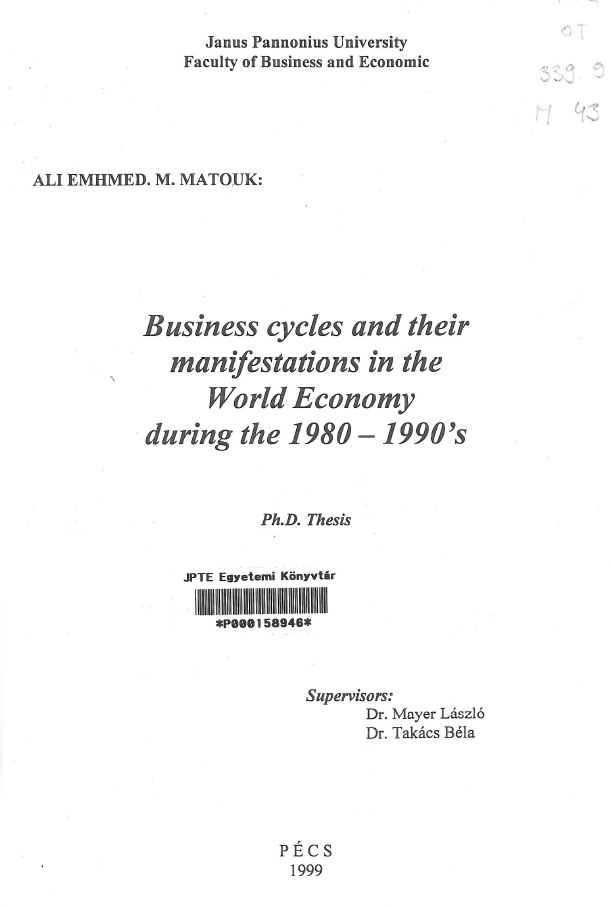Business Cycles and Their Manifestations in the World Economy during the 1980-1990's
Abstract
Fundamental changes have been taking place in the world, in both world political
and economic fields. Behind these political changes there are a great changes in the
world economy. The post-war period of economic miracle a rapid cyclical-free growth is
over. The great optimism that the capitalist market economy will grow continually
disappeared. A turning point occurred in the world around 1974 with the reappearance
of the recessions, declines in industrial production.
There were economist who argued that these cyclical movement is not similar to
the crisis in 1928/32, entirely different this is only structural and management in
character. This is not true. Not only some industrial sectors (steels, textile etc.) declined
but the whole industry. There were opinions that this crisis due to government
intervention, that is management crisis, so the solution is privatisation. This again not
true. Government great role was one of the causes of economic miracles in an earlier
period.
Very important issue is the real cause - or causes of recession. There are many
theories of this but the majority remain on the surface, list accidental causes, which do
play certain part but not the decisive. Nowadays more and more statistical information
show that huge quantity of goods produced, with less and less labour, using robots.
There are differences as well as similarities between the 1928/32 (old) recession
and the 1971-80's (new) recessions. The similarities appear in the manifestations which
characterise every recessions.
The main manifestation is the-sudden decline in industrial production. This
decline was deeper (40-50%) during the old recession while only around 5=10% during
the new ones. There were 3 recessions 1974/1975, 1980/1982, 1990/1993 - when
industrial decline occurred.

